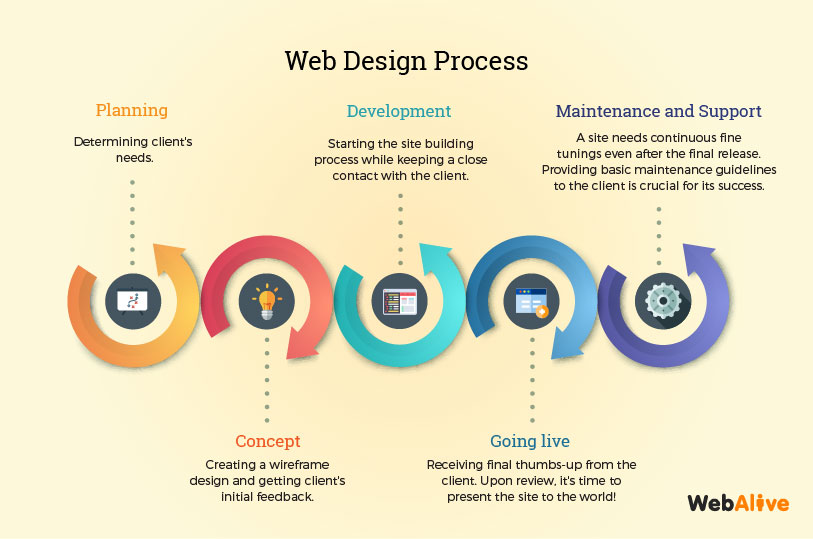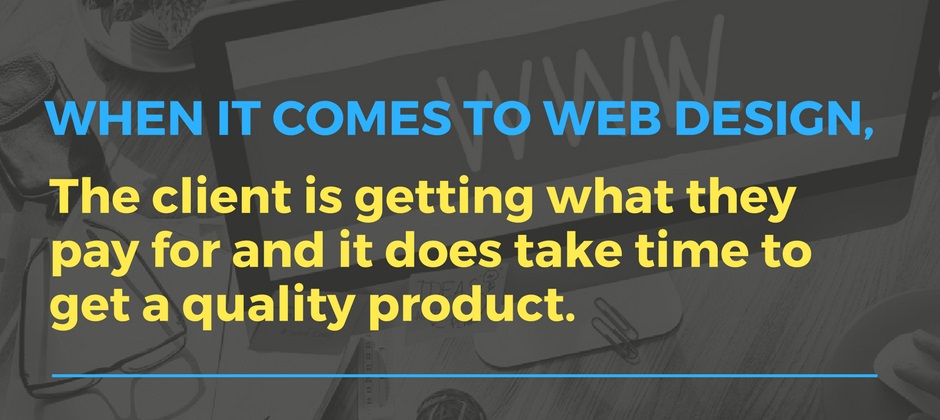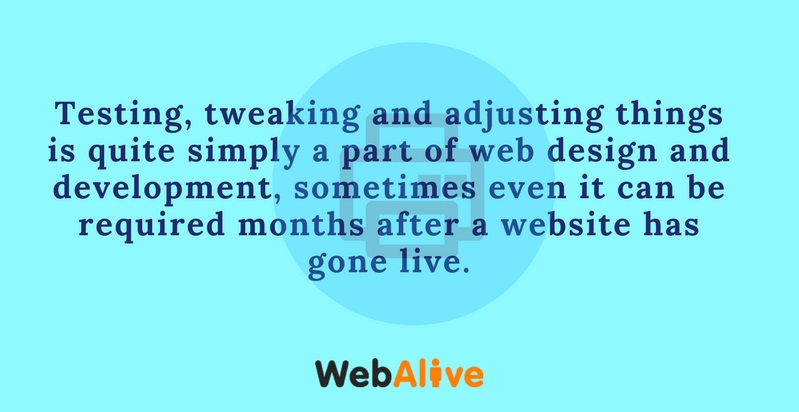
5 Web Design Misconceptions You Need to Be Aware of in 2018
Unsurprisingly, more people are using the internet to find products and services today than ever before.
In fact, Australia’s online industry is one of the quickest growing in the world. In this environment, it’s increasingly important to have an online presence and it has been shown that businesses stand to gain a great deal from investing in a quality website.
However, despite more businesses going down this track, there are still certain misconceptions about how professional web design works and what to expect from it. This can often create tension between web design companies and clients, which can bring the quality of the final product into jeopardy.
Let’s take a look at a few of the most common misconceptions about the web design process and why they exist.
Misconception #1: The client is always right
Without any doubt, a client’s perspective and ideas can be valuable and more often than not crucial to the success of the website.
Clients generally have a better idea of what appeals to their potential customers, what services and/or products should be highlighted and what kind of tone the design and content should take on if it’s going to properly reflect the business.
But there are those times when what the client wants is at odds with what the web designer knows will work and has been proven successful in the past.
The industry is changing so quickly nowadays that it’s difficult to keep up unless you have a true passion for it or you work within it. Different design features go in and out of fashion very quickly, so it’s important to build a new website that is up-to-date from a user interface and user experience perspective.
Trends change so quickly partly because of the habits of website users, and there is something of a standard or expectation of what constitutes an engaging, worthwhile website. Failing to live up to this can mean converting less visitors and ultimately reducing the longevity of the website.
So in this case, sometimes the client’s knowledge about their industry doesn’t necessarily mean they know the best way to set up the website.
Misconception #2: Everything is in the hands of the designer
Another common misconception is the idea that once a client has signed up to have a custom website built for them, it’s all up to the designer going forward.
After all, you’ve hired them to worry about everything for you, right? Unfortunately this couldn’t be further from the truth; in fact, designing a website is a very collaborative process indeed.
From the first strategy meeting and brief that is filled out, through to the providing of the content including images, text and logos, signing off on design concepts and giving feedback, the client is ideally involved every step of the way. This not only ensures that the client is pleased with the final product and is up to date with what is happening, but it usually results in a better website too.
You may be surprised to hear that most delays come from the client’s end – if you’re planning on having a website built for you, make sure you have plenty of time to uphold your end of the bargain!
Misconception #3: Web design is quick and easy
Those that have limited experience with websites will often be under the assumption that getting a custom built, responsive website up and running shouldn’t take more than a few weeks. The reality is that it can take a lot longer, especially when custom development is involved or the client is looking for something really particular or specific.
This misconception may have come as a result of changes in the complexity of websites over the past few years.
The standard for quality websites today is that they should be responsive, meaning they reshape themselves according to the screen size. There is a great deal of complicated programming and coding that is required to make this happen, which can double the time needed to build them.
It’s true that anyone can get a brochure website up and running quickly with limited design experience. However, we’d be talking about a simple static-width website with basic functionality and very little to engage visitors. We simply couldn’t compare this to a professionally-design responsive site.
Remember that
Misconception #4: Once the website is live, you don’t have to worry about it
Arguably the biggest myth when it comes to web design is the idea that a website will essentially bring its own success. What many business owners don’t realise is that it takes hard work and some investment to really get the most out of it.
You might have a terrific, beautifully designed website but it isn’t going to bring you new business if no one knows it exists.
That’s why marketing becomes so equally, if not more important than web design itself. There are various ways to promote your website online, whether it be through the use of paid ads on search engines or social media or by working on your website to ensure it shows up organically in Google.
With ever-changing design trends, new technologies, and devices constantly being introduced, web design itself is an ongoing process where maintenance is essential if you’re going to keep up. Monitoring the health of your website is very important not only to ensure its functionality but also its visibility with Google and other search engines.
Misconception #5: Bugs indicate a failure on the part of the designer
It’s not uncommon to hear of a situation where clients become upset due to finding a bug or a problem with a website after it’s been delivered to them.
However
In fact, it’s prudent to check and test your own website every so often, even if it’s been running smoothly for years.
There are a number of reasons for this, particularly when we’re talking about a more advanced or complicated system, and it doesn’t necessarily mean that the designer hasn’t done their job properly.
For one thing, there are a huge number of browsers, operating systems and devices out there that, possibly more than you can count, making it difficult to test them all thoroughly. Aspects of a website or applications that may work for a few users, can be problematic when thousands of users are jumping online and accessing them.
Website designers will always test a website extensively, but it’s not uncommon to see issues arise after the fact.
Conclusion
If you are planning on designing a website with a professional company in the near future, keep these in mind as it can ensure the process runs a lot more smoothly. That said, it is also the job of your provider to manage expectations and give you a good sense of how web design works between the two parties.
Usually, you’ll find that working with a more expensive provider is well worth the investment both in terms of the experience and the final product.
Feel free to give the team from WebAlive a call today for more information about web design and development, or to discuss your needs. We’re always happy to hear from you!
You read a lot. We like that
Want to take your online business to the next level? Get the tips and insights that matter.





